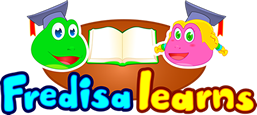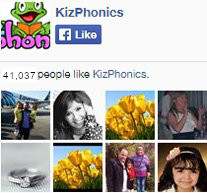Effective Teaching Strategies in Phonics Education
Phonics, the essential bridge between spoken and written language, is a foundational element of early childhood literacy education. The techniques and methods adopted by educators to impart this knowledge can have a profound impact on a child's reading and comprehension abilities. Therefore, it becomes imperative to use effective teaching strategies to ensure success. Whether you're an educator, a parent, or someone involved in the field of early literacy, understanding these strategies can be transformative. Let's delve into some of the most impactful strategies of teaching in phonics education.
Integrating Multiple Senses - Multisensory Approaches
One of the most beneficial strategies in phonics education is the multisensory approach. Engaging more than one sense can create a more immersive learning experience. For instance, having children trace letters with their fingers while saying the associated sound allows them to connect the visual letter shape with its auditory phonetic sound.
Systematic and Sequential Teaching - Structured Learning
Phonics, by its nature, requires a systematic approach. Strategy teaching that incorporates a structured sequence ensures that children begin with foundational sounds and progress to more complex phonetic combinations. For instance, starting with individual letters and short vowels, then moving onto blends and digraphs, ensures a logical flow of instruction.
Incorporating Real Reading -From Phonics to Reading
Using real books and reading materials in conjunction with phonics instruction can be a game-changer. Once children grasp basic sounds, it's essential to let them practice with actual texts. This not only boosts their confidence but also highlights the real-world application of the sounds they're learning.
Interactive Digital Resources - Modern Tools for Enhanced Engagement
In today's tech-savvy world, interactive resources can be an invaluable strategy for teaching. Websites like Kizphonics offer a plethora of digital resources that make phonics learning fun and interactive, encompassing games, videos, and animated lessons.
Continuous Assessment and Feedback - Keeping Track of Progress
Regular assessment is one of the crucial teacher strategies that can't be overlooked. By continually assessing a child's progress, educators can tailor their instruction to address any gaps in understanding. More importantly, constructive feedback can motivate children, making them more enthusiastic about their phonics journey.
Engaging in Group Activities - Collaborative Learning
Group activities can foster an environment of collaborative learning. Games that require children to identify sounds, spell, or read words out loud in a group can create a sense of camaraderie and make the learning process more enjoyable.
FAQs: Teaching Strategies in Phonics Education
1. Why are multisensory approaches considered effective in phonics education?
Multisensory approaches engage multiple senses simultaneously, which can enhance memory retention and understanding. It's particularly beneficial for children with different learning styles.
2. How often should assessments be conducted in phonics education?
While there's no one-size-fits-all answer, many educators find weekly or bi-weekly assessments effective. This frequency allows for timely feedback without overwhelming the child.
3. Are digital resources like Kizphonics suitable for all ages?
While digital resources like Kizphonics are designed keeping children in mind, they can be adapted for various age groups. It's always advisable to review any digital platform to ensure it aligns with a child's learning level.
4. How can parents support the phonics learning journey at home?
Parents can engage in regular reading sessions, play phonics-based games, use digital platforms like Kizphonics, and ensure consistent practice to reinforce what the child learns in school.
5. What if a particular teaching strategy doesn't work for a child?
Every child is unique. If one strategy doesn't seem effective, educators should be flexible and willing to adapt, trying different methods until they find what resonates with the child.
In conclusion, phonics is more than just a subject; it's the gateway to the vast world of literacy. As such, the strategies of teaching employed to impart this knowledge hold immense significance. A blend of traditional methods, modern tools, and continuous engagement can make phonics education both effective and enjoyable. Whether it's through structured sequences, interactive tools, or group activities, the goal remains the same: to instill a love for reading and lay the foundation for a lifetime of literacy."











